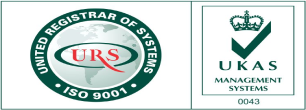
FloEFD For Plant and Process
Simulating for understanding, efficiency and safety
Designing safe and efficient plant hinges on access to accurate performance data: something fluid simulation can provide from the earliest phases of concept design. Mentor Graphics Mechanical Analysis offers a range of fluid simulation packages that can provide fluid and thermodynamic information for individual components or entire systems, in steady state or transient.
Industrial Gas Networks
Problem
The transportation and handling of gas is an issue present in many industrial processes. These gases may be at elevated temperatures, high flow rates, toxic or any combination of the above. Therefore it is not only essential to understand any proposed network well in order to design the most efficient plant, it is also an absolute requirement for establishing a safe operating environment.
Recommended Solutions
FloMASTER enables engineers to build virtual prototypes of their pipelines, enabling components to be sized, different configurations assessed, insulation requirements judged and safety critical scenarios evaluated. Its compressible solver can handle both real and ideal gas models and is complemented by a comprehensive NIST database of fluid properties.
FloEFD complements the FloMASTER solution by enabling the loss characteristics of components not covered in the standard FloMASTER catalogue to be evaluated and easily imported into FloMASTER. In addition, its unique meshing technology allows complex geometries to be easily simulated, meaning that simulations of plume dispersal from chimney’s or flares can be easily handled.
Cooling Water Networks
The laws of thermodynamics make it clear that where we use heat to generate power, there will always be a proportion rejected to a cold sink.
Cooling networks can be extremely complex, vary widely in scale and design but they are always critical to the safe and continued use of the installation they support. The design of such networks is thus fundamental to the safe operation of systems covering a range from a few kilo-Watts to several giga-Watts.
Recommended Solutions
FloMASTER was designed from the outset to aid the design of cooling water networks for large scale thermal power stations. The accuracy of the empirical data that underpins the solver ensures that designers can be sure they’re sizing their system based on the best information available. The importance of this feature is of particular significance today given spiraling energy costs and the drive towards high efficiency systems.
The transient solver in FloMASTER enables designers of smaller scale systems – which typically operate at a range of conditions – to understand the response of their network to changing loads and demands. At the larger scale, where water hammer is a real risk, FloMASTER is well suited to help quantify and design out undesirable surge events and protect cooling water condensers.
In addition, FloEFD’s unique meshing solution enables engineers to obtain accurate solutions on even the most complex of geometries. Therefore making it the ideal tool for understanding the flow patterns in complex manifolds or fittings or even the wind-loading on and plume dispersal from cooling towers.
Water Hammer
Problem
Pressure surge, or “water hammer”, occurs when rapid changes to fluid velocity occur in a pipeline system. We most commonly experience it in its most benign form as the ‘knocking’ sound sometimes heard when a domestic tap is quickly closed. However, on an industrial scale, it can be severe enough to cause catastrophic component failure. It is therefore essential that designers of pipeline systems understand the likely pressure response of their networks to planned (normal shut down and check valve operations) and unplanned events (pump/valve failures etc.). This knowledge can be used to select and choose appropriate surge mitigation strategies and devices.
Recommended Solutions
The computational engine that powers FloMASTER is specifically designed to track pressure waves and predict vapor cavity formation in systems. This capability is augmented by a comprehensive component database based upon the industry renowned work Internal Flow Systems. This ensures that accurate pressure predictions are assured at all operating conditions.
FloMASTER contains all the tools an engineer will need to analyze the transient response of a pipeline system: the empirical data that underpins the component library provides unprecedented accuracy, while the method of characteristics solver and cavity prediction tool allow for even the most severe surge events to be readily predicted.
The component library encompasses a range of common surge alleviation devices such as gas admission valves and surge tanks, which allows for the most effective method to be selected and sized from the earliest stages of the design process.
FloEFD offers engineers the opportunity to carry out accurate three-dimensional computer simulations of components without the overhead usually associated with 3D computational fluid dynamics. Embedded within a range of commonly used CAD tools, it uses a unique and well validated approach to solve for even the most complex of geometries in quick time.
The ability to export results from parametric studies in FloEFD affords designers the opportunity to augment the FloMASTER component library with bespoke performance data.
Fire Mains
Problem
Fire mains form the backbone of fire fighting strategies for sea going vessels and process plants of any appreciable size. From a hydraulic perspective, they bring together three elements (scale, flow-rate and short response time) that make them particularly vulnerable to water hammer.
Careful analysis and design is therefore essential to ensure that installed systems fulfil their required role.
Recommended Solution
FloMASTER enables designers to accurately predict the performance of both open and closed loop systems in steady state and transient. Flow rates to different points of the network can be easily balanced and – if required – surge alleviation measure evaluated and sized.
Ventilation/Contaminant Dispersal
Problem
Airflow is a complex phenomenon, subtle geometry changes or changes in temperature can result in very different flow patterns. This has particular importance where the designer needs to consider the dispersal of pollutants in laboratories, cleanrooms or hospitals. A thorough understanding of the response over a range of likely operating scenarios is essential:
For cleanrooms it is important to trace numerous contaminants through it- whether they are clothing particles or other larger sources of contaminants.
In healthcare facilities, airborne viruses and bacteria can be a threat to both patients and staff. These can have a devastating impact depending on where this exposure occurs, whether it’s in a patient room, isolation room or operating room. It is important to be able to control or eliminate these contaminants through the effective design of ventilation systems.
In laboratories, it is important that the overall ventilation system for the space does not compromise the effectiveness of the fume hoods. In particular, potentially hazardous chemical vapors could escape from the fume hood and create danger for the scientists within the room.
Recommended Solutions
FloEFD’s CAD embedded simulation package combines a unique approach to meshing with demonstrably high levels of accuracy. It can thus be readily applied to complex geometries and scenarios. FloEFD can deliver information on both comfort parameters and calculate local mean age and local air change index parameters. It also allows tracer studies to be carried out to track the dispersal rate of gases and particulates.
FloVENT offers a powerful solver to quickly assess the ventilation of internal environments. Designed specifically for this task, its interface is designed to aid engineers in obtaining useful results quickly and easily. FloVENT features a comprehensive model creation environment for HVAC airflow modeling design. A wide range of models can be assembled quickly from a complete set of SmartParts (intelligent model creation macros). SmartParts capture modeling expertise, streamlines model creation, minimizes solve times and so maximizes solution accuracy.


